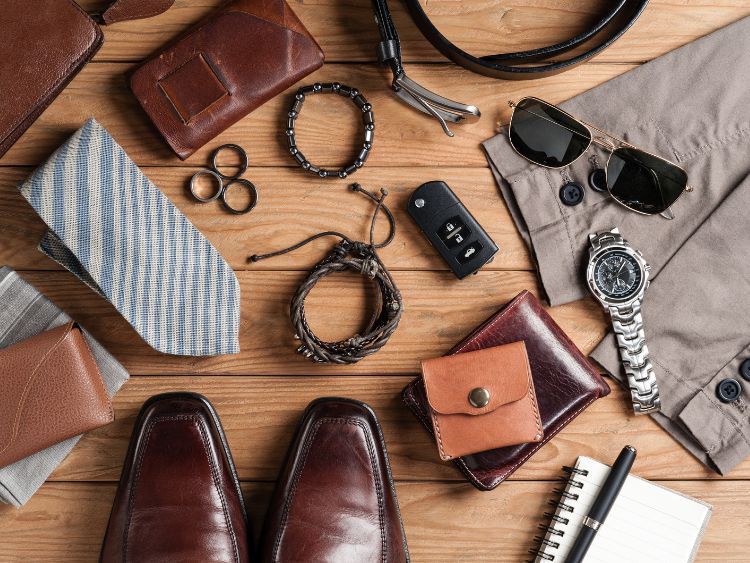When we think of 1950s fashion, images of full skirts, polished looks, and iconic silhouettes come to mind. This decade wasn’t just about clothing; it was a reflection of a post-war world, where freedom of expression was finally making its way into the everyday wardrobe. From Hollywood stars to everyday folks, the 1950s defined a new era of style that still influences today’s fashion.
The Rise of 1950s Fashion Trends
With the end of World War II, people were ready to embrace luxury again. Designers like Christian Dior revolutionized women’s fashion with the “New Look,” featuring tiny waists and voluminous skirts. This look symbolized femininity and grace, starkly contrasting with the practical and often somber wartime clothing.
Key Elements of Women’s Fashion
- The Hourglass Silhouette:
The hourglass shape dominated the 1950s fashion scene, with fitted bodices and cinched waists being essential for women. Dresses often had full skirts that flared out, accentuating the waistline and giving a dramatic, elegant look. - Poodle Skirts:
You couldn’t walk down the street in the ‘50s without spotting a poodle skirt. These full, swing-style skirts, often worn by teenage girls, featured quirky appliqués like poodles, record players, and other symbols of the times. - Pencil Skirts and Sweater Sets:
For a more refined and professional look, many women opted for slim pencil skirts paired with cardigan sweater sets. This style was a favorite for office wear and casual gatherings alike. - Capri Pants and Cigarette Trousers:
While skirts and dresses were the norm, trousers were starting to make waves. Capri pants and cigarette trousers became popular, offering a chic, slightly rebellious alternative to more traditional styles. - Accessories:
Gloves, pearls, and structured handbags were a must to complete any 1950s outfit. Gloves, in particular, were an essential part of formal wear, while a pearl necklace added a touch of class to any look.
Men’s Fashion in the 1950s
Men’s fashion in the 1950s was all about clean lines and well-fitted clothing. However, much like women’s fashion, there were two distinct styles: the casual and the formal.
- The Classic Suit:
Every man had a suit, and wearing one was the norm for business or formal occasions. Tailored suits in shades of gray, navy, or brown were standard. Wide lapels, single-breasted designs, and neat ties rounded off the look. - Casual Wear:
While suits dominated formal wear, casual clothing was starting to shift. The rise of “The Rebel” look, made famous by icons like James Dean, showcased leather jackets, white t-shirts, and jeans. This look became the epitome of cool and is still considered iconic today. - Sports Jackets and Sweaters:
For a laid-back but polished look, men often wore sports jackets paired with slacks. Sweaters, especially v-neck pullovers, also became popular for a casual yet sharp appearance.
Hollywood’s Influence on 1950s Fashion
Hollywood stars were major trendsetters in the 1950s. Women like Marilyn Monroe and Audrey Hepburn embodied the era’s glamorous side. Hepburn’s little black dress from Breakfast at Tiffany’s is still a fashion staple today, while Monroe’s daring dresses pushed the boundaries of traditional elegance.
Influence of Music Icons
Musicians like Elvis Presley also had a significant impact on fashion. Elvis’s slicked-back hair, leather jackets, and bold shirts created a style that young men quickly adopted. The 1950s wasn’t just about looking polished; it was about attitude and making a statement.
The Colors and Patterns of the 1950s
Fashion in the ‘50s wasn’t all black and white—literally. The decade embraced bold colors and playful patterns. Pastels, polka dots, and florals were everywhere, from dresses to home décor. While soft shades like baby blue and pink dominated, many opted for vibrant hues like red and electric blue for a more daring look.
Why Did Patterns Matter So Much?
In the 1950s, patterns were a sign of personality. Women’s dresses featured fun, quirky designs, while men’s ties and shirts had subtle, geometric prints. Florals, checks, and polka dots added a bit of whimsy to everyday wear.
FAQs About 1950s Fashion
What were the most popular clothing items for women in the 1950s?
Poodle skirts, hourglass dresses, and pencil skirts were all staples of 1950s women’s fashion.
How did men’s fashion evolve during the 1950s?
While formal suits remained essential, casual looks like jeans, leather jackets, and t-shirts became popular thanks to figures like James Dean.
Why were poodle skirts so iconic?
Poodle skirts captured the fun and playful spirit of the decade. They were often homemade and featured appliqués representing personal interests, making them a symbol of individuality.
What colors were trendy in the 1950s?
Pastels like baby blue, pink, and mint green were trendy. However, bold colors like red and electric blue also made frequent appearances.
Which fashion designers were popular in the 1950s?
Christian Dior and Coco Chanel were among the leading designers of the era, defining elegance and femininity in their designs.
Conclusion: Why the 1950s Still Influence Modern Fashion
The 1950s were about more than just clothes—they were about self-expression, identity, and optimism in a world recovering from war. The hourglass figure, bold prints, and polished looks continue to inspire modern fashion designers. It’s no wonder that 1950s fashion is still beloved, with its classic styles appearing on runways and in closets today.
Whether you’re looking to channel your inner Marilyn Monroe or James Dean, 1950s fashion offers timeless inspiration for anyone wanting to make a stylish statement.
Authoritative Links:
- Christian Dior Biography: www.biography.com/christian-dior
- History of the Poodle Skirt: www.fashionhistory.org/poodle-skirt
- Influence of Marilyn Monroe on Fashion: www.historyoffashion.com/marilyn-monroe

